ADATA SX8200 Pro 1TB Performance Testing
We are moving towards using larger test sizes on our benchmarks, but on several tests, we also used the smaller default test sizes. This allows us to see the difference between lighter and heavier workloads. Unfortunately, our entire backlog of SSD reviews did not include this testing methodology, so we are doing the best we can with generating comparison charts.
BlackMagic Disk Speed Test
This is a popular speed test in the video community. It shows whether a storage device is suitable for throughput required at a given video format.
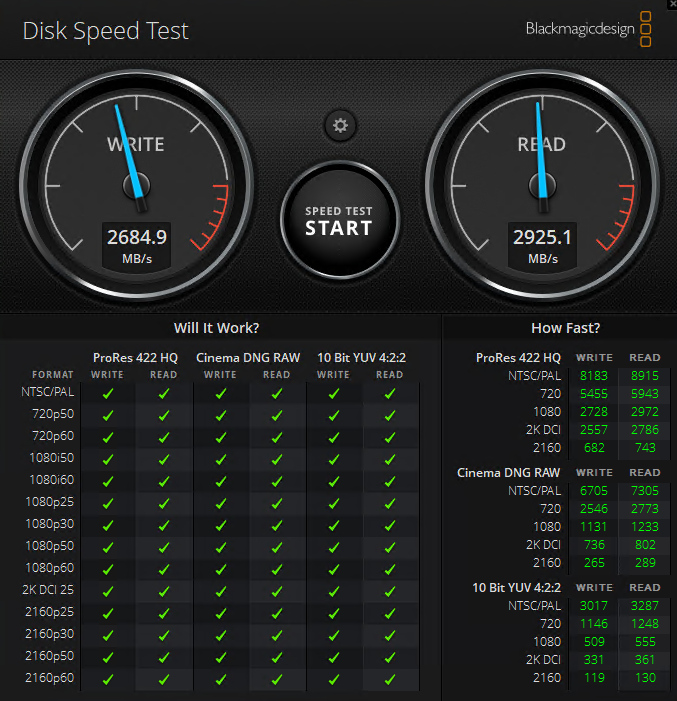
As a PCIe 3.0 NVMe SSD, the ADATA SX8200 Pro 1TB has a good showing here and handles every format this benchmark can test for. Some previously tested QLC-based PCIe 3.0 SSDs do not pass all these tests, and no SATA based drive can do so.
CrystalDiskMark 7.0.0 x64
CrystalDiskMark is used as a basic starting point for benchmarks as it is something commonly run by end-users as a sanity check.
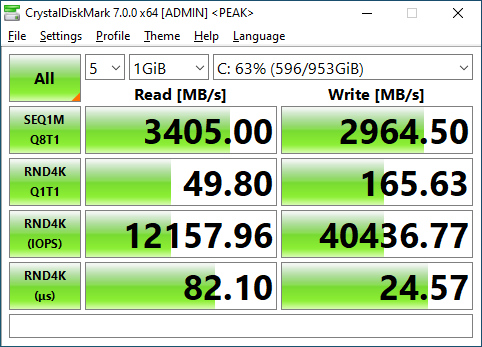
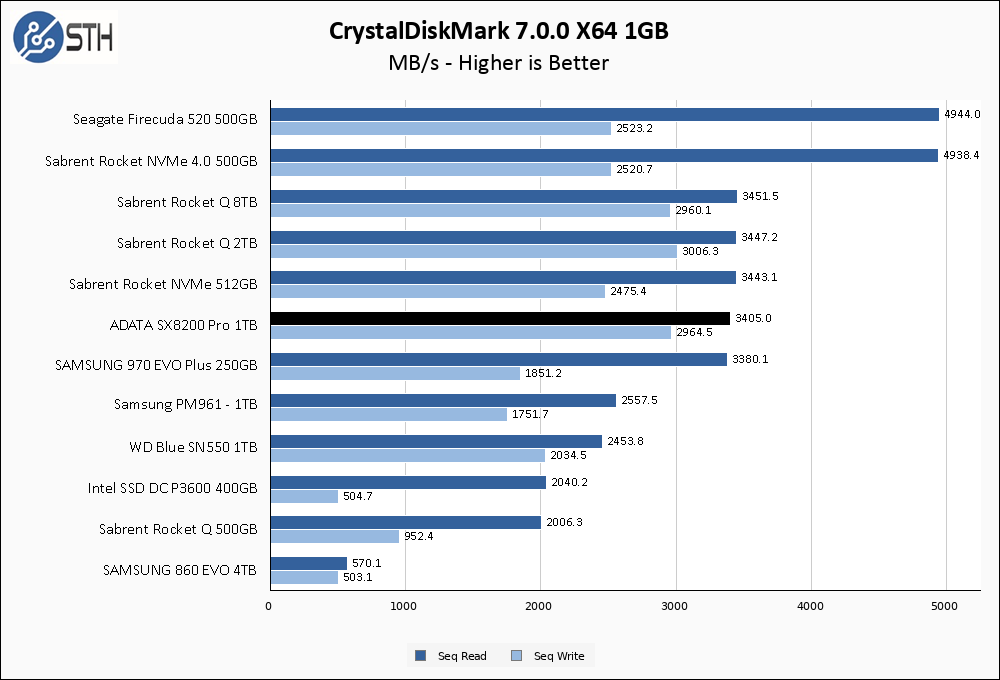
Using the 1GB test set, the ADATA SX8200 Pro 1TB is very close to the advertised specs of 3500 MB/s read and 3000 MB/s write. 3500 MB/s is functionally the limit for a PCIe 3.0 drive, so read speeds are a dead heat with a number of other PCIe 3.0 drives. In this test, the ADATA is a step up from the WD Blue we previously tested, both for reading and writing.
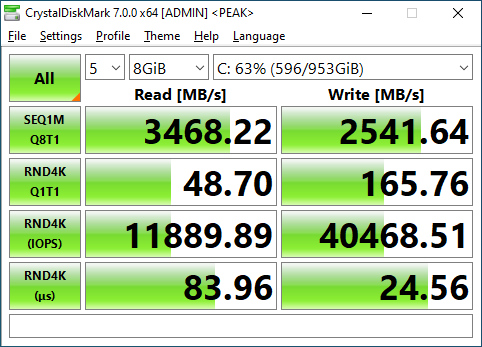
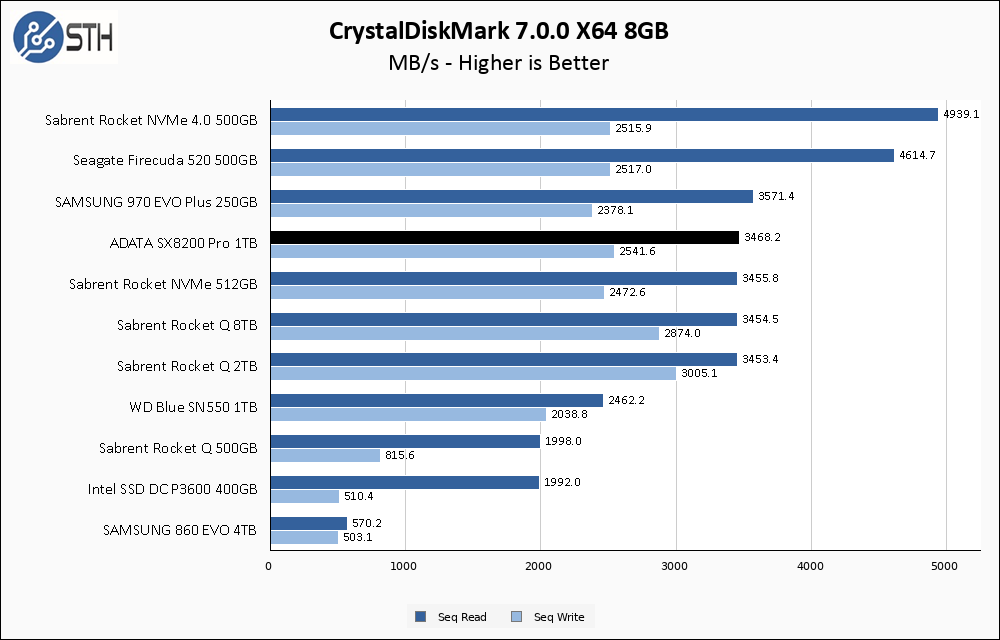
While the read speeds of the ADATA SX8200 Pro 1TB are unaffected by the larger 8 GB test set, the write speeds lose a step. This write speed drop allows the larger Sabrent Rocket Q drives to take a lead in sequential write speed. The ADATA maintains its lead over the WD drive.
ATTO Disk Benchmark
The ATTO Disk Benchmark has been a staple of drive sequential performance testing for years. ATTO was tested at both 256MB and 8GB file sizes.
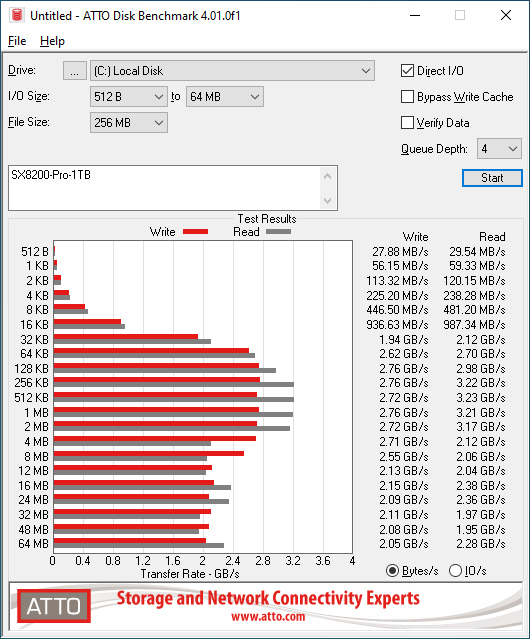
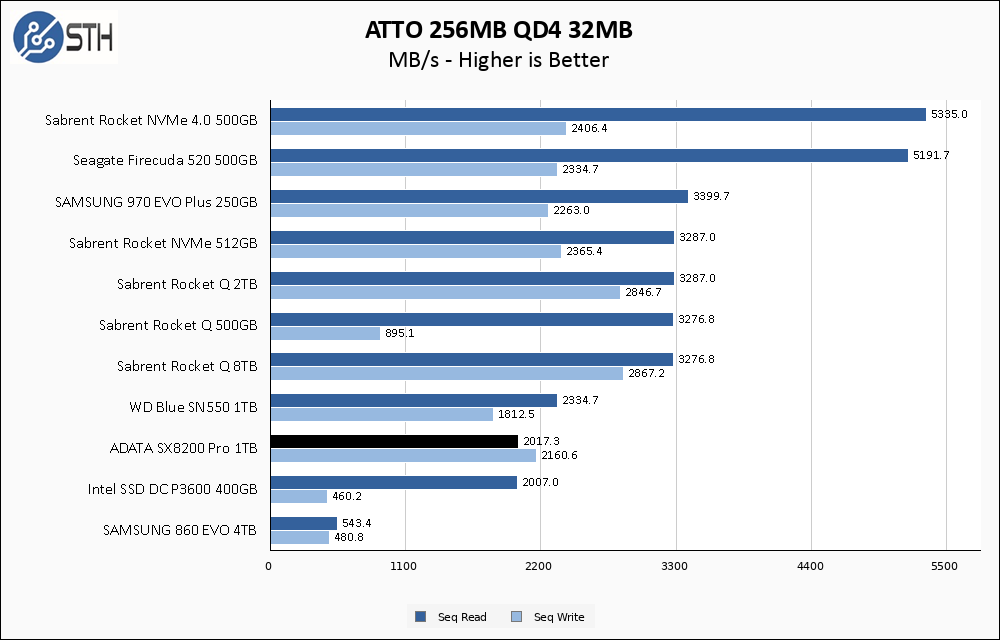
The ADATA SX8200 Pro 1TB has a bit of a rough showing in this first ATTO test, at least compared to other PCIe 3.0 SSDs. Performance significantly varies throughout the test, and in general drops off once the I/O size grows to >4MB. Our graph is drawn at the 32 MB datapoint, where the ADATA SX8200 Pro trades blows with the WD Blue SN550 drive, but overall the ADATA is the faster drive in this benchmark.
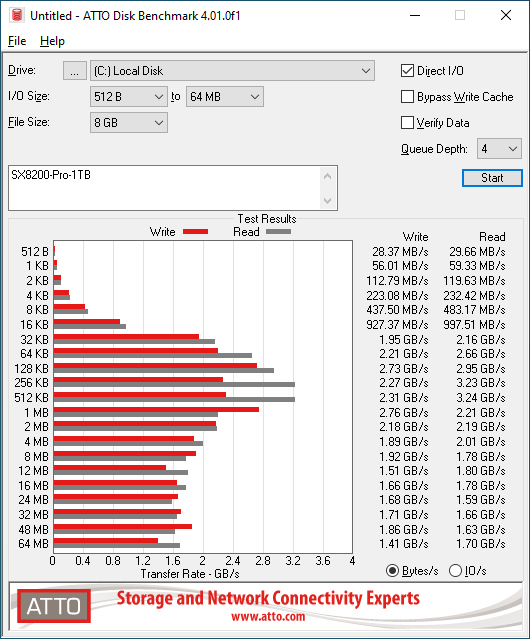
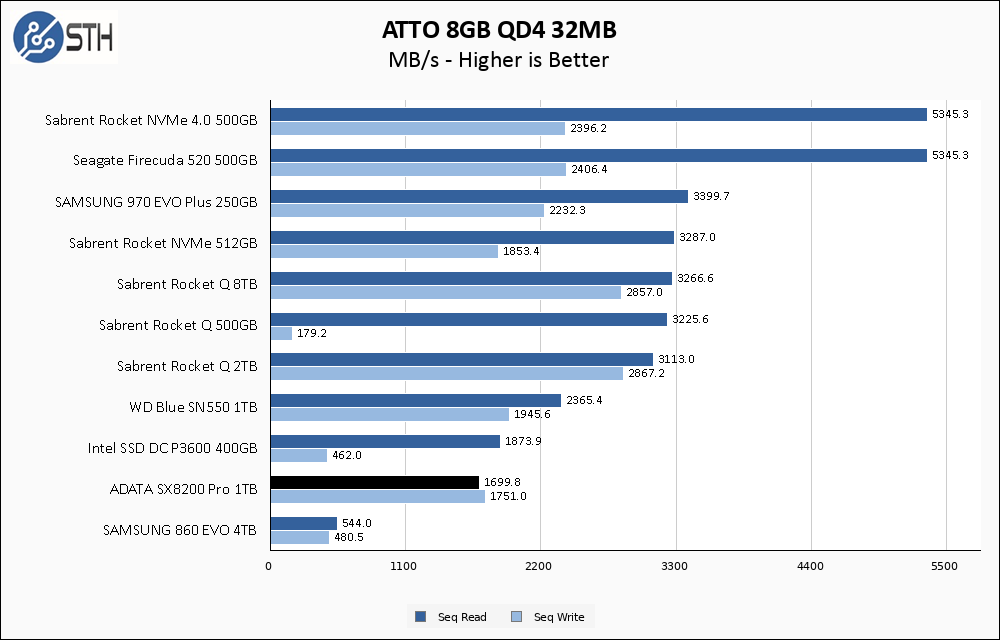
The larger 8GB ATTO test set does the ADATA SX8200 Pro 1TB no favors either. For read speed, our test drive has dropped to the bottom of the chart in terms of PCIe 3.0 based SSDs, while write speed still remains competitive. More important than positioning on the chart is the significant variability over the whole ATTO run. In comparison, one can reference our WD Blue SN550 1TB review to see that while the WD drive never reaches quite the same peak speeds, it turns in an overall much more consistent performance.
Anvil’s Storage Utilities
Anvil’s Storage Utilities is a comprehensive benchmark that gives us a very in-depth look at the performance of drives tested. This benchmark was run with both a 1GB and 8GB test size.
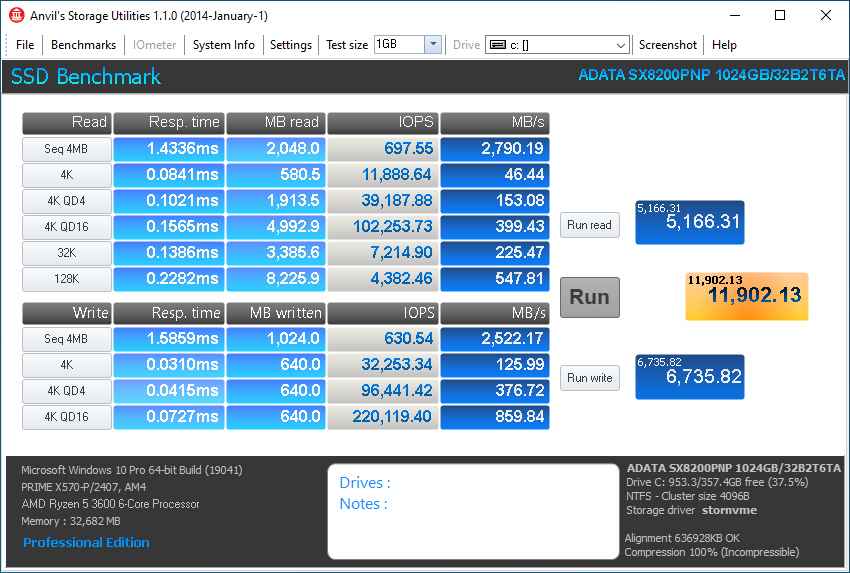
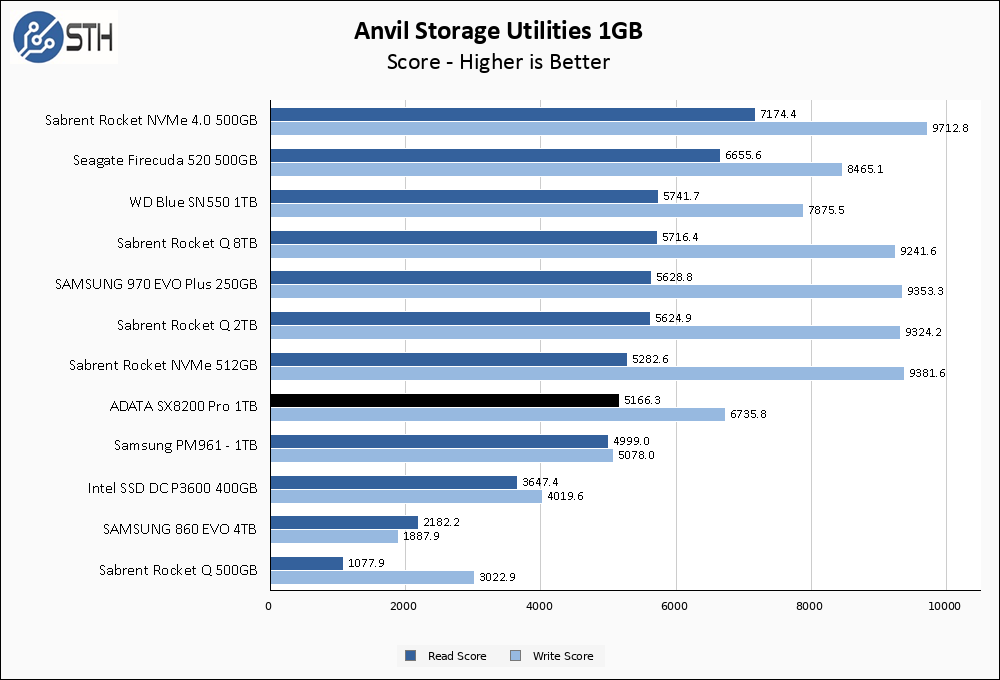
With Anvil running a 1GB test size, the ADATA SX8200 Pro 1TB turns in overall lower sequential read and write performance than with CrystalDiskMark, but higher than with ATTO. The read performance remains competitive overall with the other PCIe 3.0 SSDs, but write performance is a step behind the other drives. This is the first test where the ADATA drive suffers a definitive loss to the WD Blue unit.
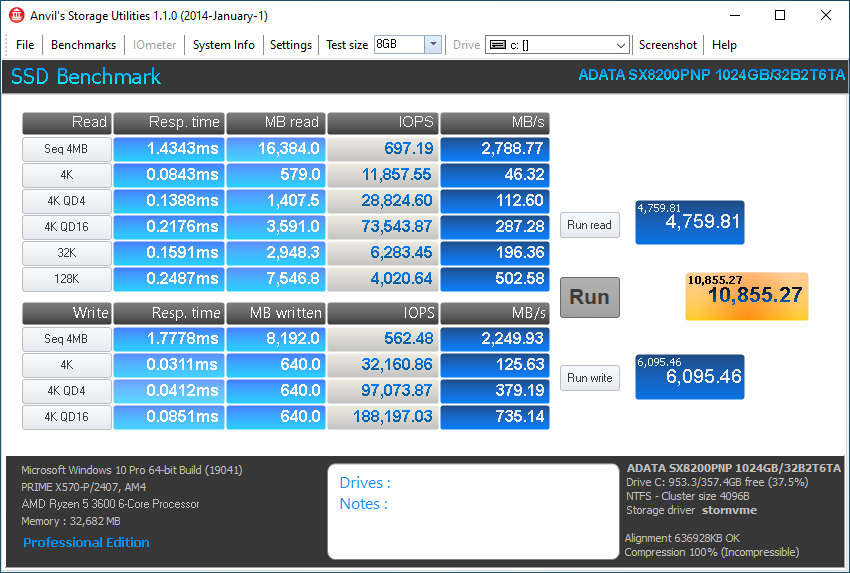
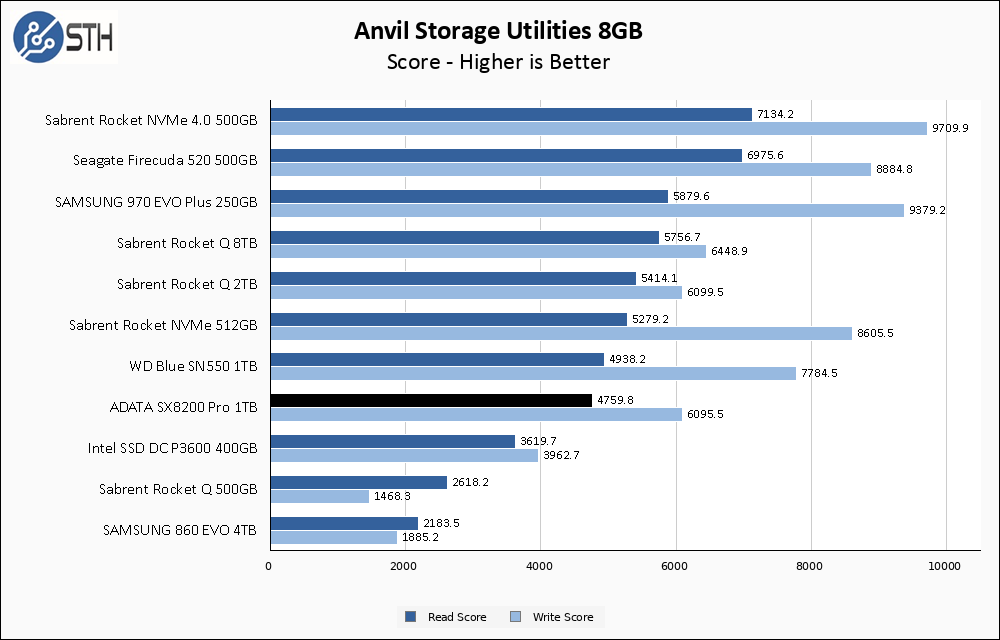
With 8GB test size, there is a minor dip in the results relative to the 1GB results, but nothing worrying, and the ADATA SX8200 Pro maintains its relative positioning in the pack of results.
AS SSD Benchmark
AS SSD Benchmark is another good benchmark for testing SSDs. We run all three tests for our series. Like other utilities, it was run with both the default 1GB as well as a larger 10GB test set.
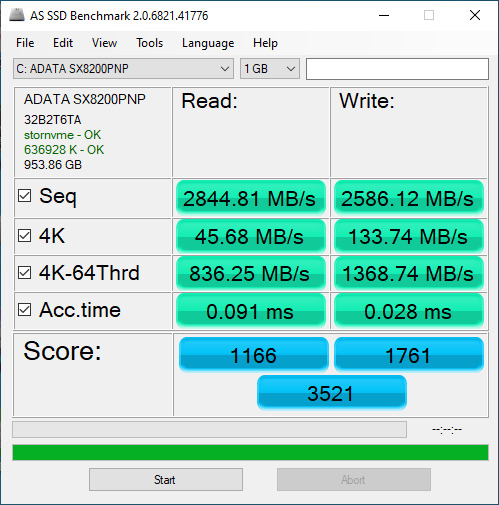
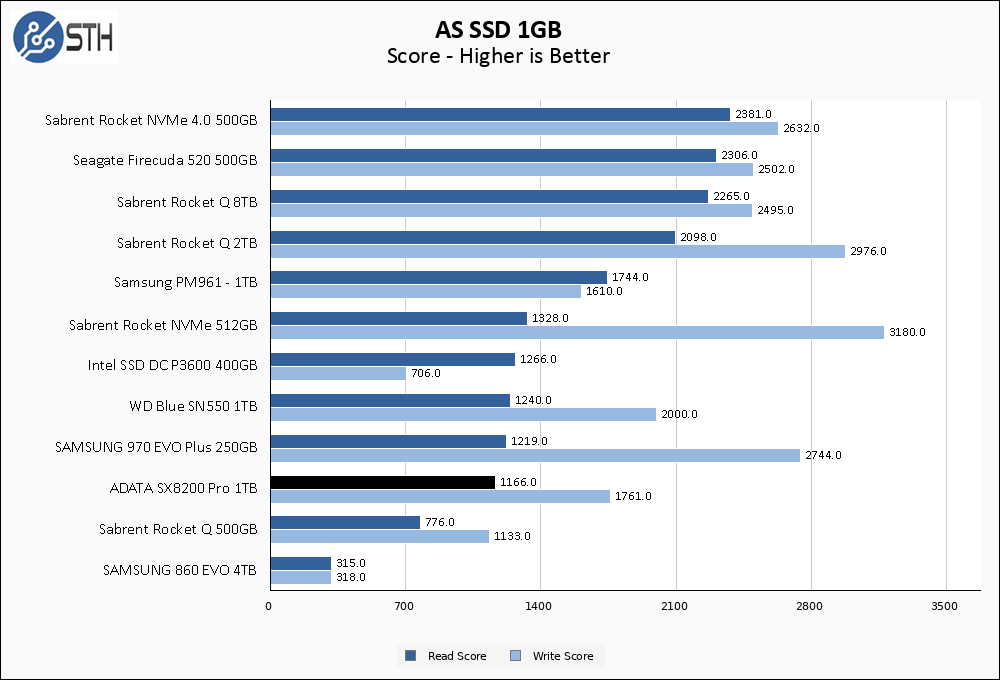
With the smaller AS SSD test set, read performance continues to be mostly in line with other PCIe 3.0 SSDs we have tested, while write performance is a small step behind.
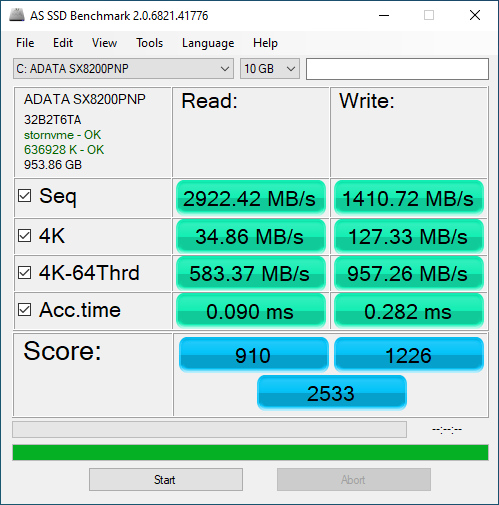
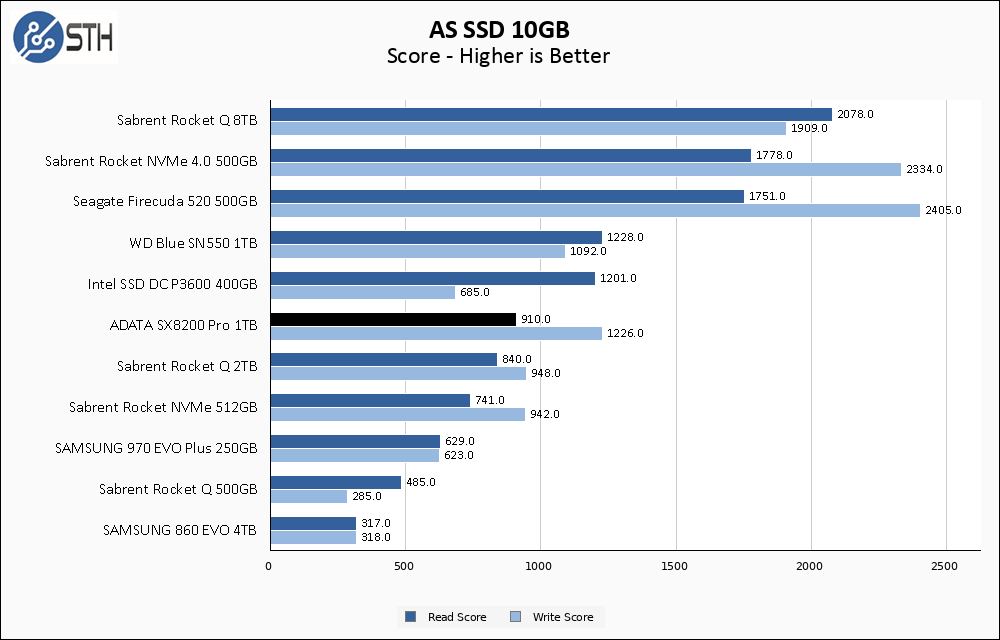
The ADATA SX8200 Pro 1TB fares better in the move to the larger 8GB test set in AS SSD than some of the other drives on our list. This lets it move a number of spots up on our chart, and take both read and write score victories over various other PCIe 3.0 SSDs.
SPECworkstation, thermals, and our conclusion are up next.




The XPG 8200 Pro has decent specs, and I bought a 512gb drive. It worked for about 2 days and then was not recognized by my computer BIOS. I haven’t had a SSD fail in the last decade. I returned it, and I plan on avoiding Adata / XPG.
This device is advertised as nvme 1.4 but is missing the required guid’s to work with vmware without resorting to down grading the nvme driver to Vsphere 6.5
Please ask Adata when they will release firmware to add in the missing NGUID and EUI-64 namespace Identifiers:
Crucial managed to do this, why can’t adata?
WelshWizard,
I only see advertising for NVMe 1.3 on the xpg.com site for this drive (located at https://www.xpg.com/en/feature/583/). It may be possible for a firmware update to add the features you want, but it is not advertised as 1.4.
I’ve got the 512GB for gaming. Absolute wee cracker of an M2. Wish I got the 1TB for longevity. Fancying their new PCI-E x4 M2 though!
On an MSI carbon pro gaming X570. Excellent speeds. First to drop, always
I can’t see why anyone would look at this, or almost anything else over the Hynix gold P31.
Fast reads, writes, low power, no need for a heat sink, TLC, 5 year warranty, 135 bucks.
Hello
Can you please consider using AJA system test ( eventually against instead BlackMagic suite)?
It’s a much more suitable test for showing the sustainability of the storage during a real lifr recording test
Thank you in advance
@Will Taillac,
Oh oops, yeah I made a mistype I did mean 1.3, not 1.4.
This doesn’t change much as NVME 1.3 standard should have NGUID and EUI-64 namespace Identifiers, which are missing.
How can you call I standard compliment with missing features?
The only thing I’d like to see in these tests is more of a emphasis on random performance rather than sequential.
James,
Sequential performance is often what is quoted by consumer SSD manufacturers in their specifications, so I test for that to make sure they line up with their own advertising. Plus, everyone likes big numbers; CDM and ATTO serve that purpose. For someone interested in the random performance, ASSSD and Anvil offer a much better benchmark, since their read and write scores include the random performance at varying queue depths. That is also the reason I include the pictures of the raw benchmark output, rather than just the comparison graph – so our readers can look at the stat that matters to them.
@Will can you ask ADATA about their plans to add in the missing features which are part of the 1.3 spec namley NGUID and EUI-64 namespace Identifiers
As without these it cant be used in vmware without downgrading nvme drivers.
I’m planning on 2x1TB versions of this ADATA model for entry in to the HP L32648-001 running under FreeNAS as a cache. Cannot wait to finish the build with 4x10Gbe SPF+ from two Chelsio T420s.
Thanks for writing this article.
How do we check which controller we have? I have 2x 2 TB but I bought them several months apart. I don’t want controller discrepancies to cause problems if/when I stripe them…
Ted,
I found out about the controller by physically looking at it. The model was silkscreened right onto the controller.
AIDA64 shows the controller of the SSD without physically looking at it, specially when you already put the heatsink on it. Just go to Storage>ATA then select your SSD and the info can be found usually at the bottom of the details.
lopgok comment is stupid, because the infallible product does not exist, that is why warranty exists. I work for a computer manufacturer and I hate this kind of customer no brain comment and hurt brand without consequences. This kind of person is really undesirable even hire for job.
Writing this on april 2023
I bought 512GB one 6 months ago, it died the get replaced , hopefully the second one will be better